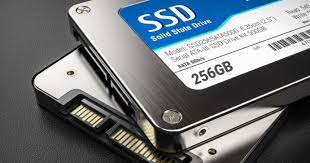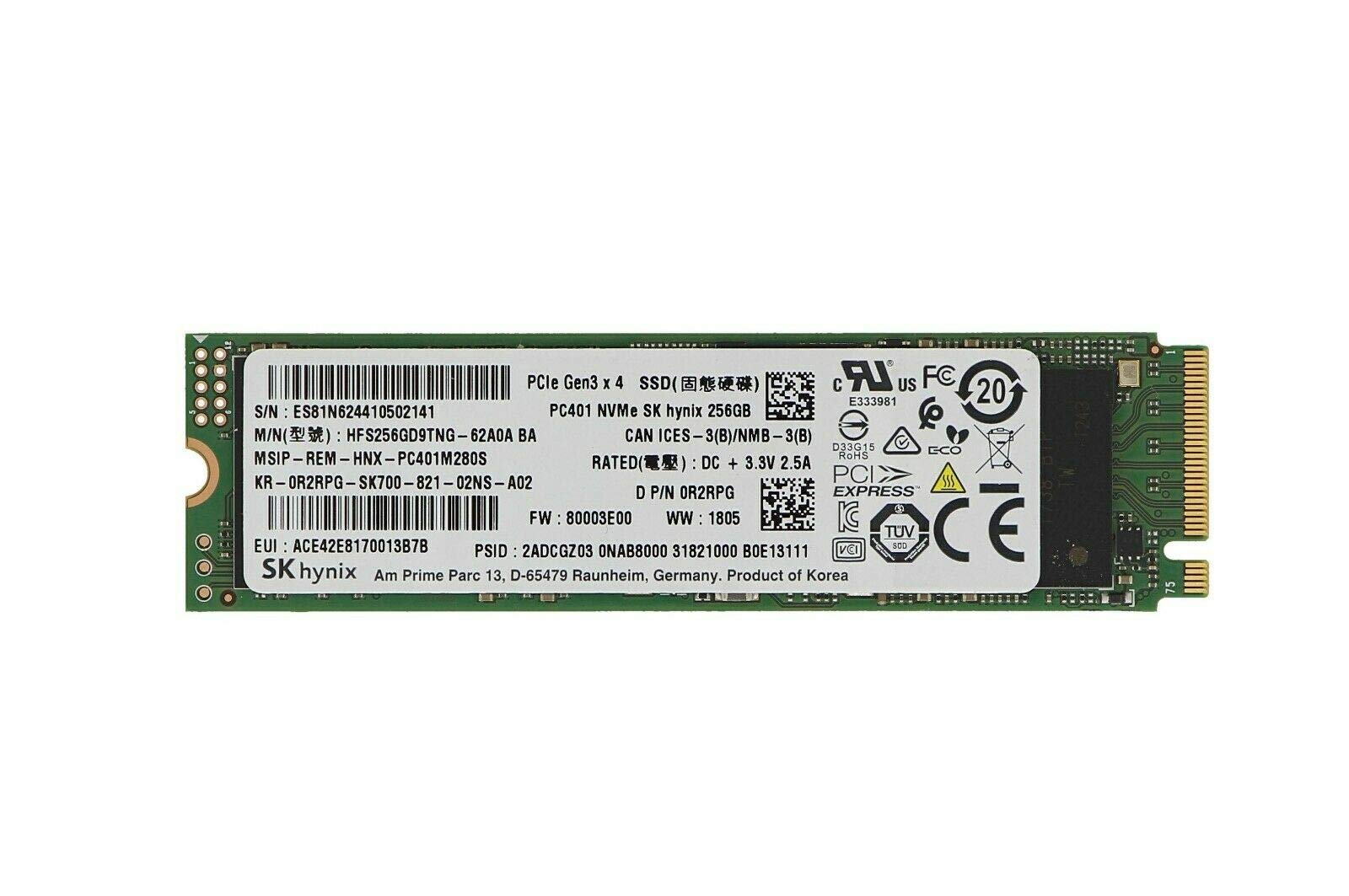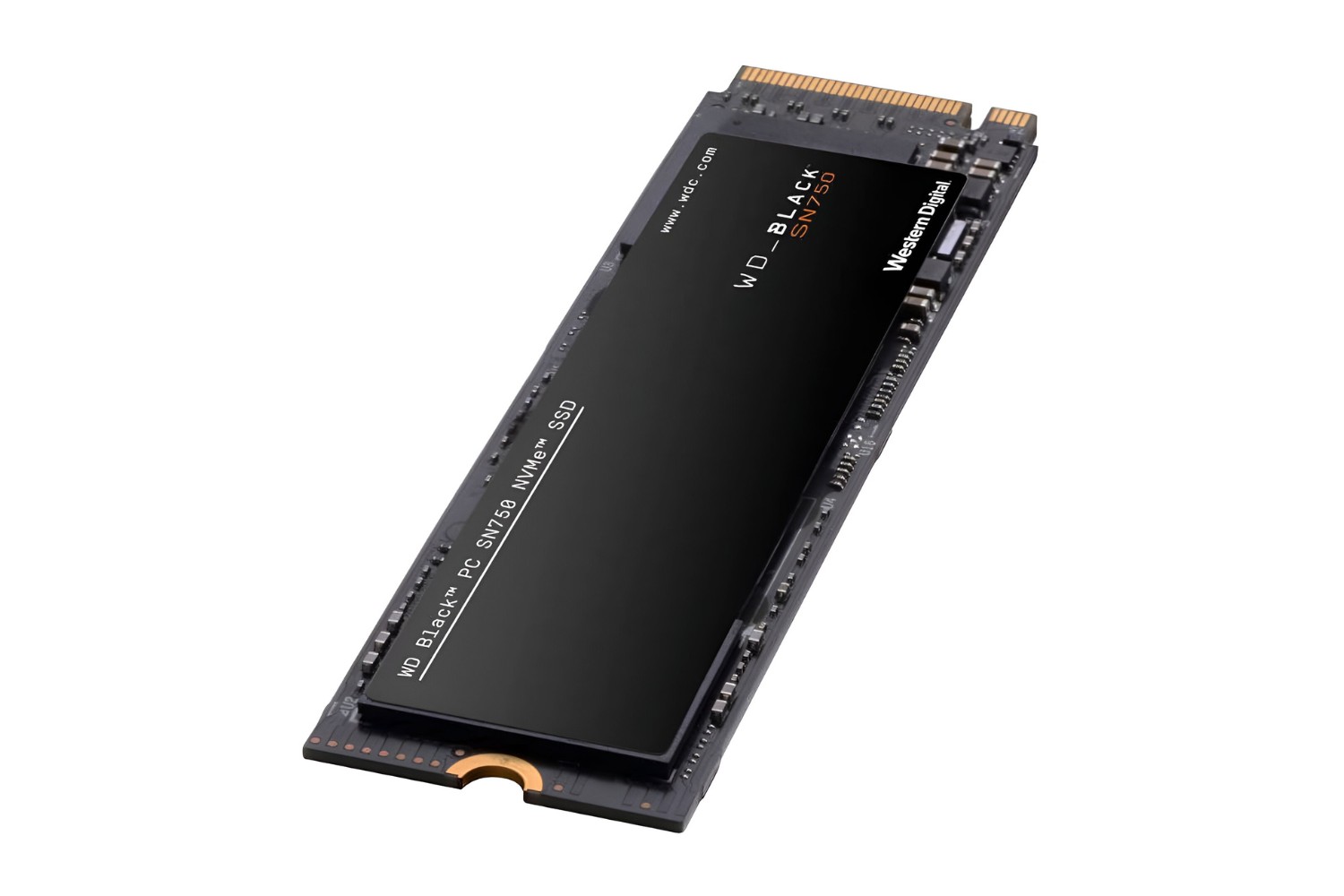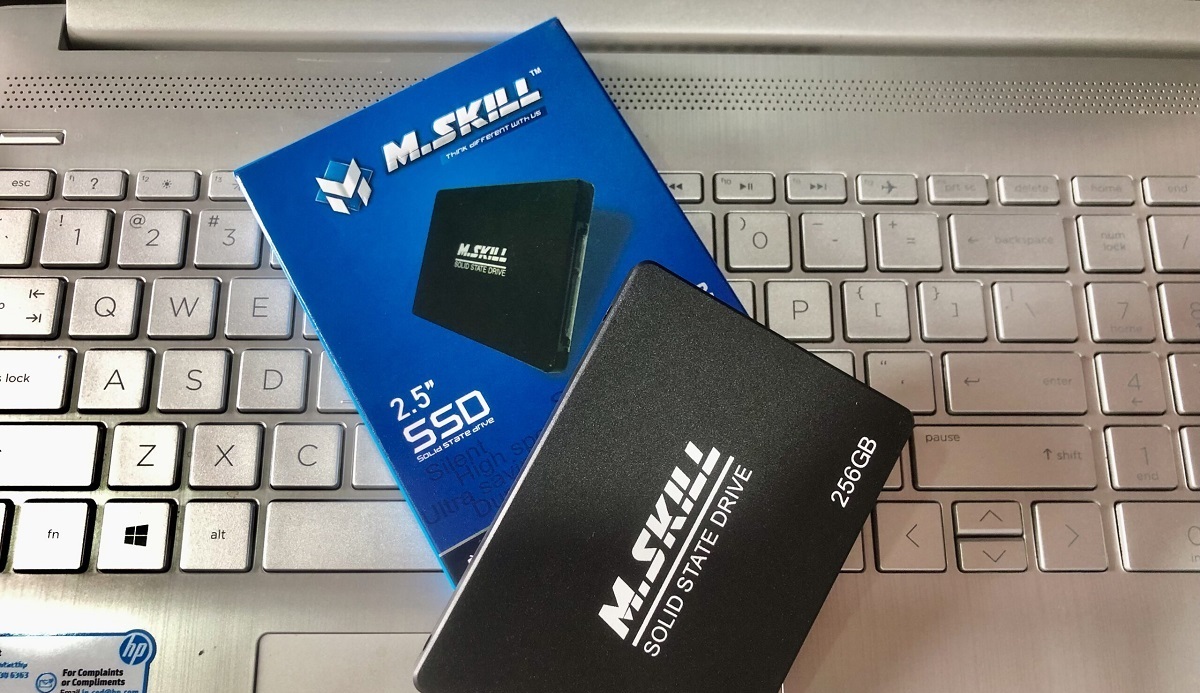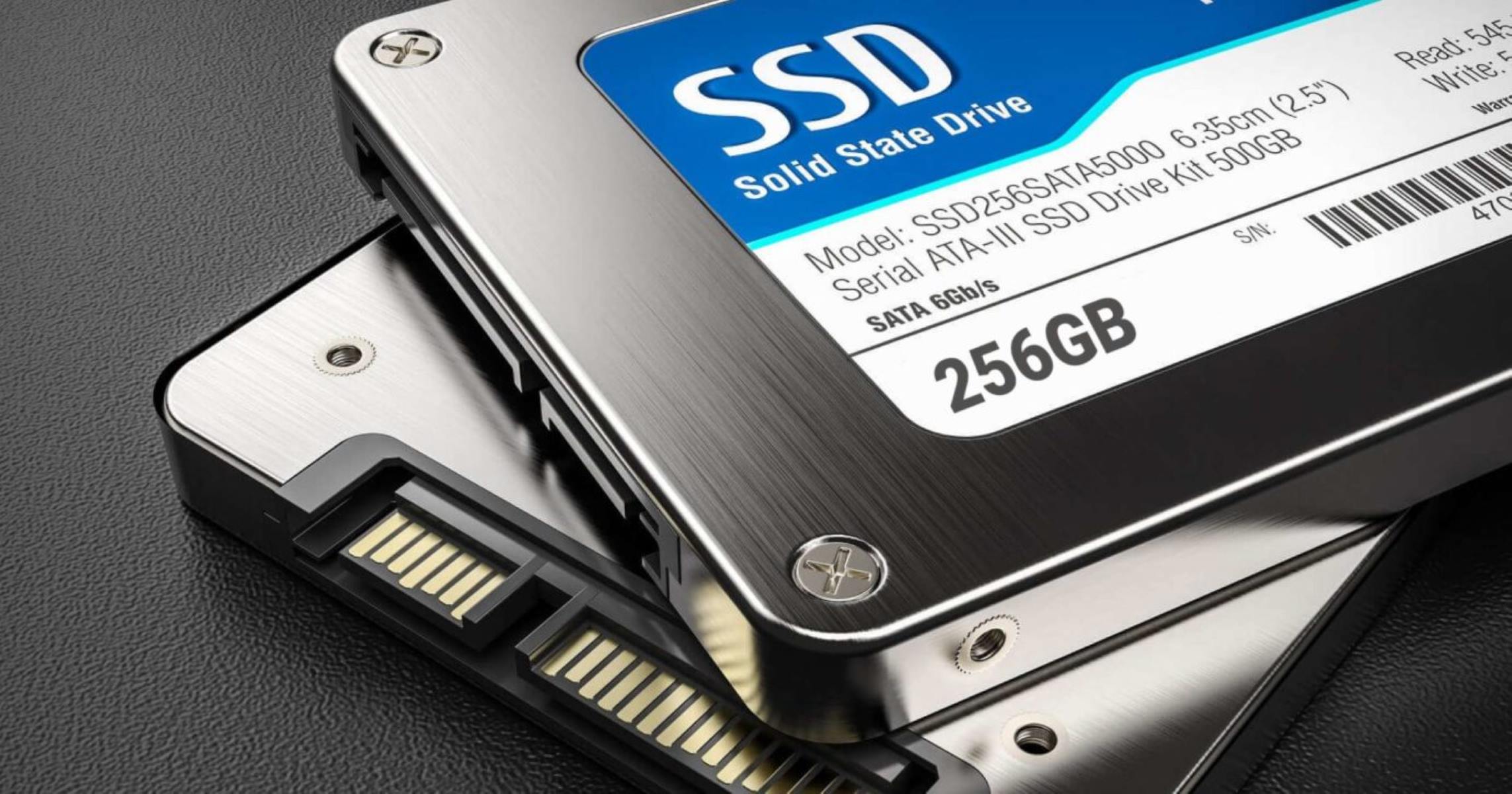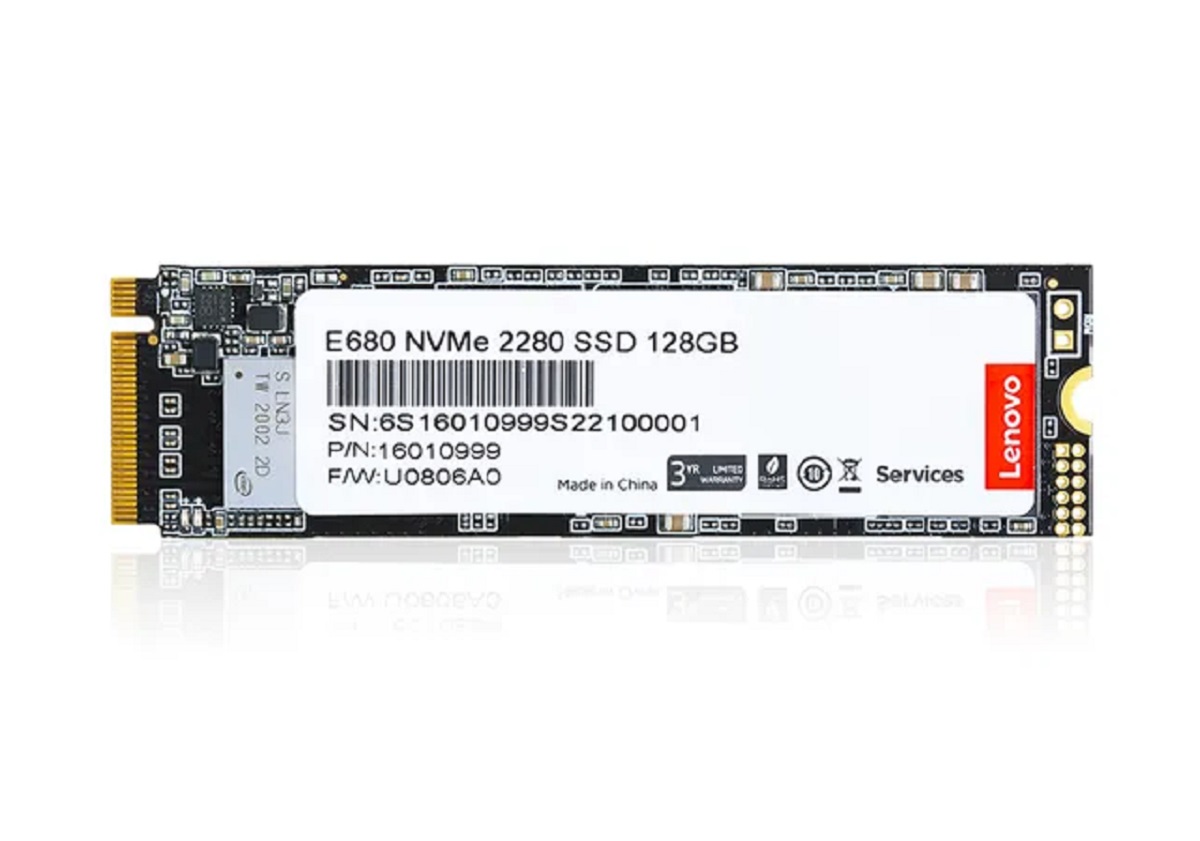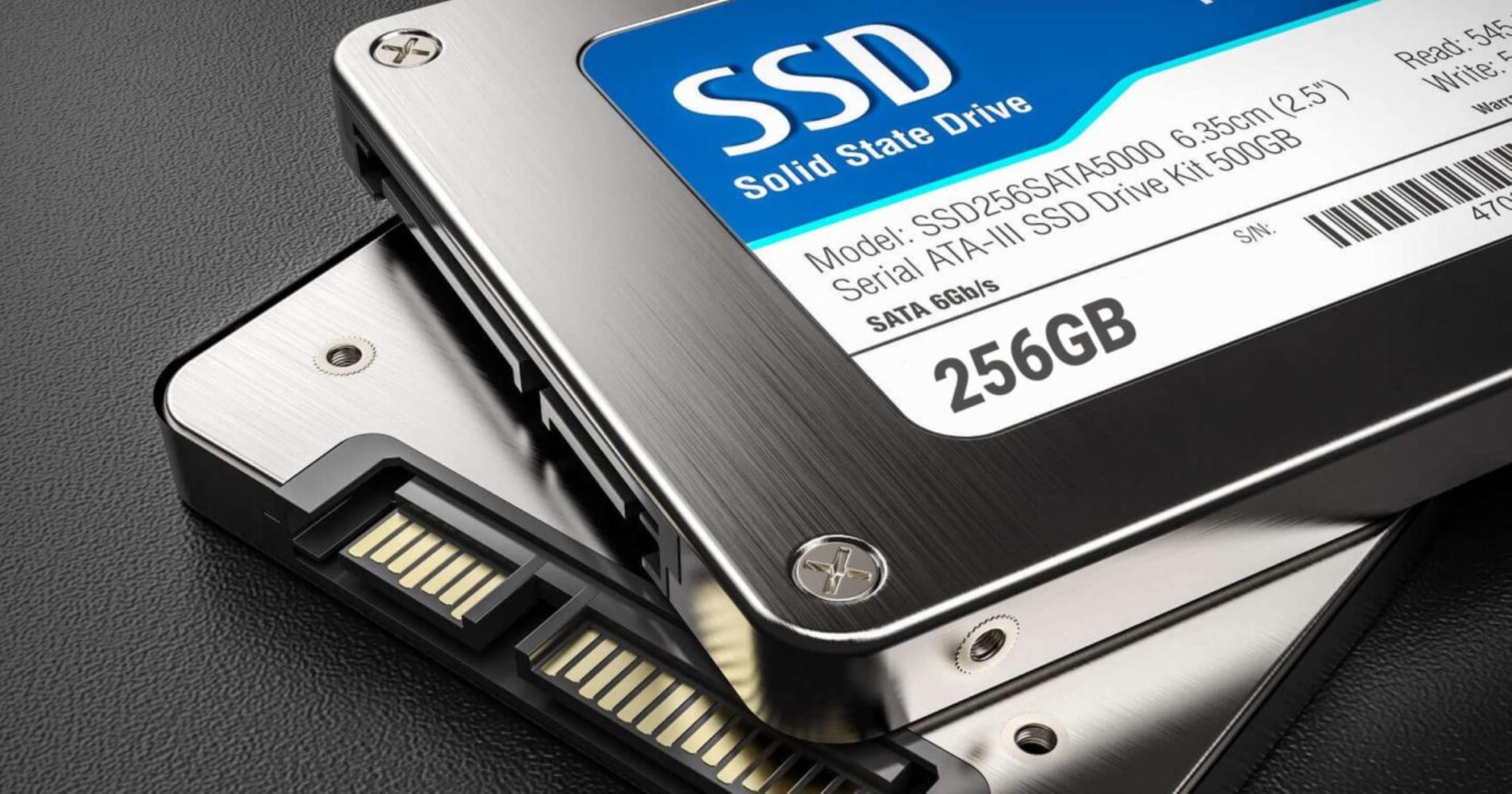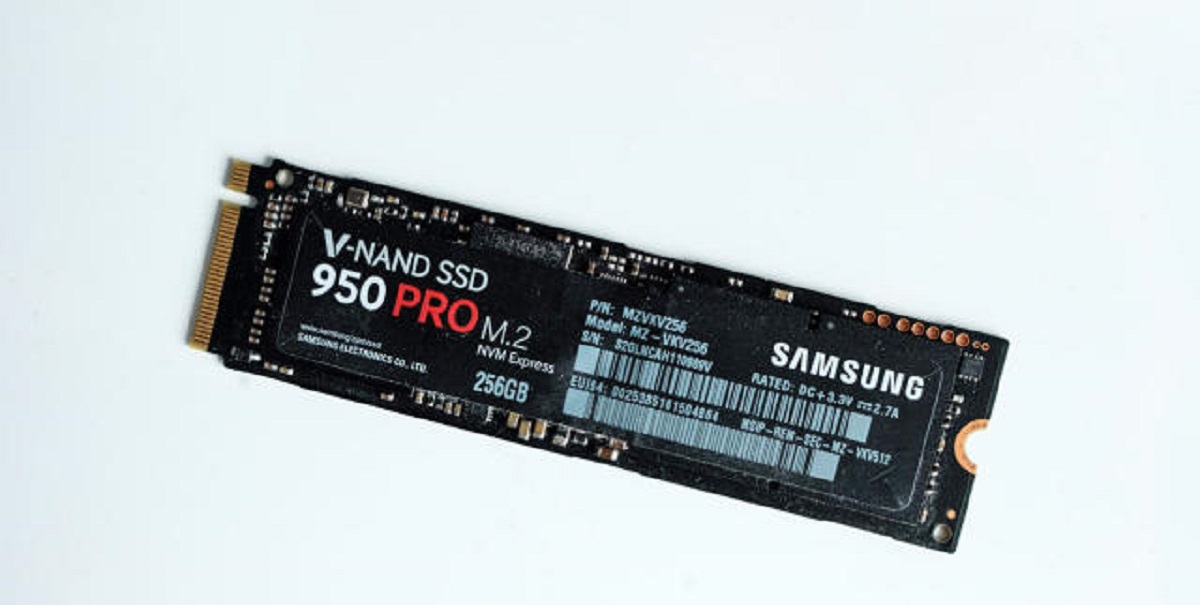Introduction
Welcome to the world of storage technology! In today’s digital age, where data reigns supreme, having a reliable and efficient storage solution is crucial. One of the most significant advancements in storage technology is the Solid State Drive, commonly known as SSD. Unlike traditional Hard Disk Drives (HDD) that use spinning magnetic disks to store and retrieve data, SSDs utilize flash memory chips to store data in a non-volatile manner.
With their compact size, lightning-fast read and write speeds, and impressive durability, SSDs have gained immense popularity among computer users. Whether you’re a casual user or a hardcore gamer, having a fast and spacious storage solution is essential to ensure smooth and efficient performance.
In this article, we will delve into the incredible world of SSDs, focusing specifically on the 256GB SSD. We will explore what exactly an SSD is, the advantages they offer over traditional HDDs, and the specific features and considerations associated with a 256GB SSD. So, let’s dive in and discover what makes the 256GB SSD such a powerful storage option.
What is a Solid State Drive (SSD)?
A Solid State Drive (SSD) is a data storage device that uses NAND flash memory chips to store and retrieve data. Unlike traditional Hard Disk Drives (HDDs), which rely on spinning magnetic disks and mechanical components, SSDs have no moving parts, making them faster, quieter, and more durable.
The key component of an SSD is the NAND (Not-And) flash memory, a type of non-volatile storage technology. Non-volatile means that the data stored on an SSD remains even when the power is turned off, making it ideal for long-term storage. This is in contrast to volatile storage, such as Random Access Memory (RAM), which loses data when the power is cut off.
SSDs offer several advantages over HDDs. Firstly, their non-mechanical nature allows for faster read and write speeds, resulting in significantly improved overall system performance. This means that applications load faster, files transfer quickly, and the overall computing experience becomes smoother and more responsive.
Secondly, SSDs are more durable than HDDs since they lack moving parts that can fail or wear out over time. This makes them more resistant to shock, vibration, and extreme temperatures. As a result, SSDs are less prone to mechanical failures and are generally considered more reliable for storing valuable data.
Furthermore, SSDs operate silently since they don’t have any spinning disk or moving components, enhancing the overall user experience by eliminating the distracting noise produced by HDDs. Additionally, SSDs consume less power, making them more energy-efficient and allowing for longer battery life in laptops and other portable devices.
In summary, a Solid State Drive is a storage device that utilizes NAND flash memory technology to provide faster performance, increased durability, and improved energy efficiency compared to traditional Hard Disk Drives. With these advantages in mind, it’s no wonder that SSDs have become the go-to choice for many computer users seeking optimal storage solutions.
Advantages of SSDs
Solid State Drives (SSDs) offer a multitude of advantages over traditional Hard Disk Drives (HDDs). These advantages have made SSDs increasingly popular among computer users of all types. Let’s explore some of the key benefits that SSDs bring to the table.
- Faster Performance: SSDs provide significantly faster data transfer speeds compared to HDDs. With no mechanical parts to slow down the process, SSDs can access and retrieve data almost instantaneously. This results in faster boot times, quicker application load times, and smoother overall system performance.
- Improved Reliability: Traditional HDDs are prone to mechanical failures due to their moving parts. On the other hand, SSDs have no moving components, making them more resistant to physical wear and tear. This increased durability translates into a higher level of reliability and reduces the risk of data loss or drive failure.
- Energy Efficiency: SSDs consume less power than HDDs. They have lower power requirements, which results in reduced energy consumption. This not only translates into longer battery life for laptops and portable devices but also contributes to a greener and more sustainable computing environment.
- No Noise: Since SSDs do not have any spinning disks or moving parts, they operate silently. This absence of noise is a significant advantage, especially for those who appreciate a quiet computing environment or work in noise-sensitive areas.
- Compact and Lightweight: SSDs are much smaller and lighter than HDDs. This compact form factor allows for easier installation, especially in slim and compact devices. The reduced size and weight also make SSDs ideal for portable devices, such as laptops, ultrabooks, and tablets.
- Shock and Vibration Resistance: Traditional HDDs are susceptible to damage from shocks and vibrations. Conversely, SSDs are built to withstand these physical stresses. Their solid-state design makes them more shock-resistant, ensuring that your data remains safe and accessible even in rugged environments.
Overall, the advantages offered by SSDs make them the preferred choice for users looking for faster performance, increased reliability, energy efficiency, silent operation, and smaller form factors. With continuous advancements in technology, SSDs are becoming more affordable and accessible, making them a worthwhile investment for anyone seeking an upgrade in storage capabilities.
Understanding Storage Capacities
When it comes to storage devices, understanding storage capacities is essential to ensure you choose the right option for your needs. Storage capacity refers to the amount of data that a device can hold. In the context of Solid State Drives (SSDs), storage capacities are typically measured in gigabytes (GB) or terabytes (TB).
It’s important to note that the actual usable capacity of an SSD may be slightly lower than the advertised capacity due to formatting and system files. Manufacturers also use the decimal system to calculate storage capacity, while computers use the binary system. This can result in a slight discrepancy between the advertised capacity and the actual usable capacity when viewed on a computer.
When considering storage capacities, it’s important to assess your specific needs and usage patterns. Here are some commonly available storage capacities for SSDs:
- 256GB: A 256GB SSD offers a good balance between storage space and cost. It provides enough capacity for most users to store their operating system, applications, and several large files or games. It’s a suitable option for those who want a noticeable performance boost without breaking the bank.
- 512GB: A 512GB SSD provides double the storage space of a 256GB drive. This capacity is ideal for users who require more storage for their files, multimedia content, and larger applications or games. It’s a great choice for enthusiasts, content creators, and gamers who need ample room for their data without compromising on speed.
- 1TB: A 1TB SSD is ideal for users with extensive storage needs. With a terabyte of capacity, you’ll have plenty of space for operating systems, programs, large media collections, and even multiple large applications or games. This is a popular choice for professionals working with large files and those who prioritize having vast amounts of storage at their disposal.
- 2TB and Beyond: SSDs with 2TB and higher capacities are available for users with exceptionally large storage requirements. These drives are suitable for professionals who deal with massive amounts of data, such as video editors, graphic designers, and data analysts. Additionally, these high-capacity drives cater to users who want to store extensive multimedia collections or large amounts of high-definition content.
It’s important to consider your budget, storage needs, and future growth when choosing the right storage capacity. Keep in mind that as your data storage needs evolve, you can also consider upgrading existing SSDs or expanding storage using multiple drives or external solutions. Understanding storage capacities will help you make an informed decision and ensure that your data is stored securely and accessible at all times.
What is 256GB?
A 256GB storage capacity refers to the amount of data that the device can hold. In the context of Solid State Drives (SSDs), 256GB represents a significant amount of storage space that can accommodate a wide range of files, applications, and media content.
To put 256GB into perspective, let’s consider the amount of data it can store:
- Operating System: A typical operating system installation, such as Windows or macOS, usually requires around 20-30GB of space. With a 256GB SSD, you will have ample room to install and run your preferred operating system.
- Applications: Most software applications occupy a few gigabytes of space. With a 256GB SSD, you will have enough capacity to install numerous programs, including productivity tools, media editors, and gaming applications.
- Files and Documents: Whether you’re working with documents, images, videos, or audio files, a 256GB SSD provides sufficient storage for a large collection. You can store thousands of high-resolution photos, dozens of HD videos, or hundreds of documents without worrying about running out of space.
- Games: Video games have grown in size over the years. However, many games still fall within a reasonable range that can be accommodated by a 256GB SSD. You can store several large games along with smaller titles, giving you the flexibility to enjoy your gaming library without constant file management.
- Media Content: If you’re fond of multimedia, a 256GB SSD can easily handle a vast collection of music, movies, and TV shows. You can store hundreds of albums or tens of movies and have them readily accessible whenever you want to enjoy your favorite entertainment.
The 256GB capacity strikes a balance between affordability, performance, and storage space. It provides enough room for essential operating system files, applications, documents, media files, and even some large games. With this capacity, you won’t feel constrained by limited storage and can comfortably store a substantial amount of data.
It’s worth mentioning that the available storage might be slightly lower than the stated capacity due to formatting and system overhead. Additionally, it’s always advisable to periodically back up your data to ensure its safety and prevent any potential data loss.
Whether you’re a casual user, a professional, or a gamer, a 256GB SSD offers a good balance between functionality and affordability. It allows you to store and access a significant amount of data, ensuring that you have enough capacity to meet your needs without compromising on performance and speed.
How much can you store on a 256GB SSD?
A 256GB Solid State Drive (SSD) offers a considerable amount of storage space that can accommodate a variety of files, applications, and media content. Let’s take a closer look at how much you can store on a 256GB SSD.
The actual usable capacity of a 256GB SSD may be slightly lower due to formatting and system files. However, with 256GB of storage, you can store a significant amount of data:
- Operating System: An operating system installation typically requires around 20-30GB of space. With a 256GB SSD, you can comfortably install and run your preferred operating system while still having plenty of storage space left for other files and applications.
- Applications and Programs: Applications and programs vary in size, but most commonly used software falls within a reasonable range. With a 256GB SSD, you can install and have multiple applications readily accessible, including productivity tools, media editors, gaming software, and more.
- Documents and Files: Whether you’re working with word documents, spreadsheets, images, or PDFs, a 256GB SSD offers ample storage for a vast collection of files. You can store thousands of documents and files, including high-resolution images, without running out of space or having to offload data frequently.
- Media Content: If you’re a fan of multimedia, a 256GB SSD provides enough storage capacity to store a considerable collection of music, movies, and TV shows. You can save hundreds of albums, dozens of movies, and even multiple seasons of your favorite TV series, ensuring easy access and entertainment on the go.
- Gaming Library: Video games have progressively increased in size over the years, but a 256GB SSD can still comfortably accommodate a diverse gaming library. You can store multiple large games, including some of the latest titles, along with smaller games, ensuring you have a wide selection of games to enjoy without constantly uninstalling and reinstalling to manage space.
It’s important to note that the actual amount of data you can store on a 256GB SSD will depend on the file sizes and types you have. For example, large video and media files will take up more space compared to text documents or smaller image files.
If you find yourself running out of space on your 256GB SSD, you have a few options. You can prioritize which files and applications you keep on the SSD and move less frequently used or larger files to an external storage device. Alternatively, you could consider upgrading to a higher-capacity SSD to meet your evolving storage needs.
In summary, a 256GB SSD provides a substantial amount of storage space to comfortably accommodate your operating system, a range of applications and programs, thousands of documents and files, a considerable collection of multimedia content, and a variety of games. It strikes a good balance between storage capacity, performance, and affordability, making it a popular choice for many users.
Performance and Speed of a 256GB SSD
The performance and speed of a 256GB Solid State Drive (SSD) play a crucial role in enhancing overall system performance and user experience. Compared to traditional Hard Disk Drives (HDDs), SSDs offer significant improvements in terms of speed, responsiveness, and reliability.
One of the primary factors that contribute to the impressive performance of an SSD is its lack of moving parts. Unlike HDDs, which rely on spinning disks and mechanical read/write heads, SSDs use flash memory technology to store and retrieve data. This non-mechanical nature allows SSDs to offer faster operation times and reduced latency.
The sequential and random read and write speeds of a 256GB SSD can vary, depending on the specific SSD model and manufacturer. However, in general, SSDs provide significantly faster data transfer rates compared to HDDs. This means that tasks such as booting up the operating system, launching applications, and opening files will be noticeably quicker with an SSD.
The random access times of SSDs are also substantially better than those of HDDs. This means that data can be accessed and retrieved from various areas of the storage device more efficiently, resulting in faster response times and smoother multitasking abilities.
Furthermore, a 256GB SSD enhances system performance by reducing file fragmentation. Unlike HDDs, SSDs do not suffer from performance degradation due to fragmented files, as data can be accessed simultaneously from multiple locations on the drive. This means that applications and files load faster, with fewer instances of slowdowns or delays.
In addition to performance improvements, a 256GB SSD also offers enhanced reliability. SSDs are less prone to mechanical failures, such as disk crashes or read/write head issues, which can be common in HDDs. With no moving parts, SSDs are more resistant to physical shock and vibration, making them a more durable and reliable storage solution.
It’s important to note that the performance and speed of a 256GB SSD can also be influenced by factors such as the quality and architecture of the SSD controller, the type of NAND flash memory used, and the firmware optimizations implemented by the manufacturer.
Overall, a 256GB SSD provides a substantial boost in performance and speed compared to traditional HDDs. With its faster data transfer rates, reduced access times, and improved reliability, an SSD contributes to a more efficient and enjoyable computing experience. Whether you’re a casual user, a professional, or a gamer, the performance benefits of a 256GB SSD make it a worthwhile investment for anyone looking to optimize their storage system.
Compatibility and Installation of a 256GB SSD
When considering upgrading your storage solution to a 256GB Solid State Drive (SSD), it’s important to understand the compatibility requirements and the installation process. This ensures a smooth transition and optimal performance of your new SSD.
Compatibility:
Most 256GB SSDs are designed to be compatible with a wide range of computers, laptops, and even gaming consoles. However, it’s essential to ensure that your system meets the necessary requirements before purchasing an SSD. Here are a few compatibility factors to consider:
- Interface: Check if your system has the appropriate interface that matches the SSD’s interface. The most common SSD interfaces are SATA (SATA III or SATA 6Gb/s) and PCIe (PCI Express).
- Form Factor: SSDs are available in various form factors, such as 2.5-inch, M.2, and U.2. Ensure that the SSD you choose is compatible with the physical space within your system.
- Operating System Support: Most modern operating systems support SSDs without any issues. However, it’s always a good idea to check for any specific requirements or firmware updates that may be recommended by the SSD manufacturer.
- Power and Data Cable Compatibility: Ensure that your system has the necessary power and data cables to connect the SSD. SATA SSDs typically require a SATA data cable and a SATA power cable.
Installation:
The installation process for a 256GB SSD may vary depending on your specific system’s design and form factor. However, the general steps involved in installing an SSD are as follows:
- Prepare: Back up your data from the existing drive to an external storage device to avoid any potential data loss during the installation process.
- Shut Down: Power down your system and disconnect the power cable.
- Access the Drive Bay: Open your system’s case or access the specific compartment where the existing storage device or the new SSD will be installed. Consult your system’s manual if needed.
- Remove Existing Drive: If you’re replacing an existing drive with the new SSD, disconnect the cables and carefully remove the drive from the bay. If it’s a new installation, proceed to the next step.
- Install the SSD: Mount the new SSD into the designated bay or slot, ensuring a secure fit. Connect the necessary data and power cables to the SSD.
- Closing Up and Powering On: Carefully close your system’s case or secure the access panel. Reconnect the power cable, and power on your system.
- Format and Install Operating System: If you installed the SSD as a new drive, you may need to format it using the appropriate utilities before installing the operating system. Follow the instructions provided by your system or operating system.
- Restore Data: After the operating system installation, you can restore your data from the backup you created earlier.
It’s worth noting that these steps are general guidelines, and the actual installation process may vary depending on the specific system and SSD model. Consult the manufacturer’s instructions or your system’s manual for more detailed guidance.
By ensuring compatibility and following the recommended installation steps, you can successfully upgrade to a 256GB SSD and enjoy its performance benefits. If you’re unsure about the installation process, it’s always a good idea to seek professional assistance or consult online resources specific to your system.
Factors to Consider when Choosing a 256GB SSD
When selecting a 256GB Solid State Drive (SSD) for your storage needs, it’s important to consider several key factors to ensure that you choose the right SSD for your specific requirements. Here are some essential factors to consider:
- Performance: Look for an SSD that offers high read and write speeds, as this directly affects the overall performance of your system. Faster speeds result in quicker boot times, improved application load times, and smoother multitasking capabilities.
- Reliability and Endurance: Consider the reliability and endurance of the SSD. Look for SSDs with a long lifespan and a high number of program/erase (P/E) cycles. Some SSDs also offer technologies like wear-leveling and error correction to improve reliability.
- Controller and NAND Type: The controller and NAND flash memory technology used in an SSD play a significant role in its performance. Look for SSDs with modern controllers and advanced NAND types, such as 3D NAND, which offer improved speed, efficiency, and durability.
- Compatibility: Ensure that the SSD is compatible with your system’s interface and form factor. Common interfaces include SATA (SATA III) and PCIe (PCI Express). Additionally, consider the physical dimensions and form factor to ensure a proper fit within your system.
- Power Efficiency: If you’re concerned about energy consumption and battery life, look for SSDs that offer power-efficient features. Some SSDs have low power modes and power management features that optimize energy usage without sacrificing performance.
- Warranty and Support: Pay attention to the warranty offered by the SSD manufacturer. A longer warranty period typically indicates the manufacturer’s confidence in their product’s reliability. It’s also beneficial to consider the availability of customer support and firmware updates.
- Price and Value: Compare the prices of different SSD models within your budget range. Consider the overall value and performance-to-price ratio offered by each SSD to make an informed decision. Remember to balance your requirements with the cost-effectiveness of the SSD.
- User Reviews and Ratings: Read user reviews and ratings to gain insights into the real-world performance and reliability of the SSD. The experiences of other users can provide valuable information and help you identify any potential issues or strengths of specific SSD models.
Every user’s requirements and priorities may vary, so it’s essential to consider these factors based on your specific needs. By evaluating these factors, you can select a 256GB SSD that offers the right balance of performance, reliability, compatibility, and value for your storage solution.
It’s worth noting that technology is constantly evolving, and new SSD models may offer additional features or advancements. Stay informed about the latest trends and releases to ensure that you make the most informed decision when choosing a 256GB SSD.
Conclusion
Solid State Drives (SSDs) have revolutionized the world of storage technology, offering significant advantages over traditional Hard Disk Drives (HDDs). When considering a 256GB SSD, it’s important to keep in mind the various aspects discussed throughout this article.
We explored what exactly an SSD is and the benefits it brings, such as faster performance, enhanced reliability, energy efficiency, silent operation, and a compact form factor. A 256GB SSD provides a good balance between storage capacity and cost, making it suitable for a wide range of users.
We discussed the compatibility requirements and installation process, emphasizing the importance of ensuring interface compatibility, form factor fit, and following proper installation steps. It’s crucial to consult your system’s manual and the SSD manufacturer’s instructions for accurate guidance.
Understanding storage capacities helped us gauge the amount of data that can be stored on a 256GB SSD. Whether it’s the operating system, applications, files, multimedia content, or games, a 256GB SSD offers ample space to meet the storage needs of most users.
We also examined the performance and speed aspects of a 256GB SSD, emphasizing faster data transfer rates, reduced access times, and improved reliability compared to HDDs. These performance benefits contribute to a smoother and more efficient computing experience.
Lastly, we discussed the important factors to consider when choosing a 256GB SSD, including performance, reliability, compatibility, power efficiency, warranty and support, price, and user reviews. Evaluating these factors helps ensure that you select the right SSD that meets your specific requirements.
In conclusion, a 256GB SSD provides a powerful and cost-effective storage solution, benefiting users across various sectors. Its combination of ample storage capacity, impressive performance, and space-saving design makes it an excellent choice for individuals seeking to enhance their computing experience. By carefully considering compatibility, installation processes, and important factors, you can maximize the potential of a 256GB SSD and enjoy the advantages it offers for years to come.







